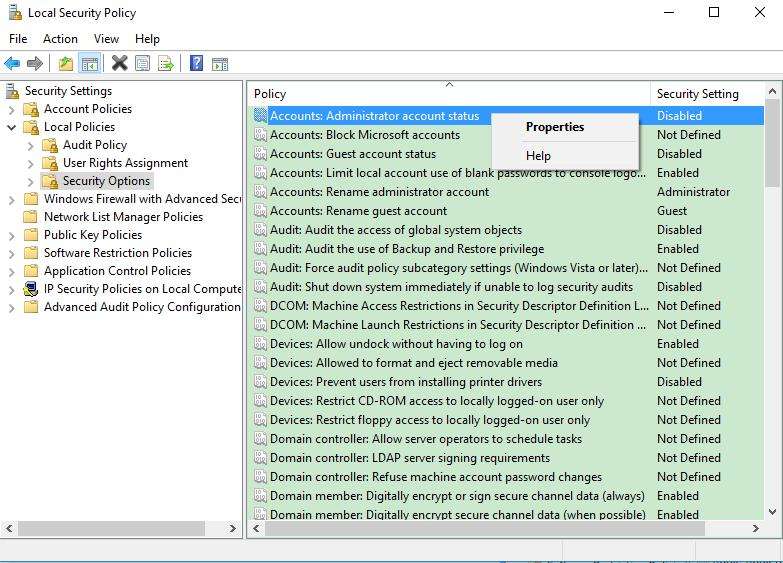

Change the “ Value data” to “ 1” to disable Fast User Switching set it to “ 0” to enable it. Local Security Policy in Windows 7 Home Premium After I posted this question, I found out that the Local Security. Hello, I need to disable new user accounts creation by the non-admin users on computers with Windows 10 Home edition OS.
Double-click “ HideFastUserSwitching“. Windows 10 Home - missing Local Security Policy editor. If it does not exist, right-click the “ System” folder, select “ New DWORD 32-bit value“, and then type the name “ HideFastUserSwitching“. Look for a value called “ HideFastUserSwitching“. Type “ regedit”, and then press “ Enter“. Select “ Enabled” to turn Fast User Switching off. Open “ Hide Entry Points for Fast User Switching“. The Local Group Policy Editor appears. Type “ gpedit.msc”, and then press “ Enter". Hold the Windows key and press “ R” to bring up the Run dialog box. Modify the security policy setting, and then click OK. When you find the policy setting in the details pane, double-click the security policy that you want to modify. Step 3: In the popup window, go to the Log on tab. Step 2: In the popup window, find out Security Center service and double-click it. Step 1: Press Windows key and R key together to launch Run dialog, type services.msc in the box and click OK or hit Enter to continue. Click Local Policies to edit an Audit Policy, a User Rights Assignment, or Security Options. The detailed operation methods are as follows. Click Account Policies to edit the Password Policy or Account Lockout Policy. Under Security Settings of the console tree, do one of the following: To open Local Security Policy, on the Start screen, type secpol.msc, and then press ENTER. To configure a setting using the Local Security Policy console When a local setting is inaccessible, it indicates that a GPO currently controls that setting. You must have Administrators rights on the local device, or you must have the appropriate permissions to update a Group Policy Object (GPO) on the domain controller to perform these procedures. 
Describes steps to configure a security policy setting on the local device, on a domain-joined device, and on a domain controller.






 0 kommentar(er)
0 kommentar(er)
